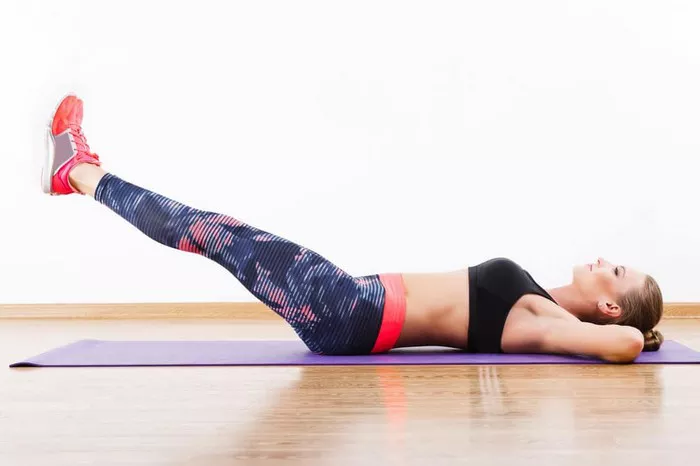Ashtanga Vinyasa Yoga is a dynamic and structured style of yoga that combines breath with movement through a progressive series of postures. Rooted in the teachings of the late Sri K. Pattabhi Jois, this disciplined practice is divided into six series: the Primary Series (Yoga Chikitsa), the Intermediate Series (Nadi Shodhana), and four Advanced Series (Sthira Bhaga). Each series builds upon the previous one, requiring dedication, strength, and flexibility. The Intermediate Series, also known as Nadi Shodhana, is the next step after mastering the Primary Series. It purifies the nervous system, strengthens the body, and deepens the practitioner’s mental focus. In this article, we will explore the structure, benefits, challenges, and requirements of the Intermediate Ashtanga Vinyasa.
Understanding the Intermediate Series (Nadi Shodhana)
The Intermediate Series is designed to cleanse and strengthen the nervous system while improving flexibility and stamina. “Nadi Shodhana” translates to “nerve cleansing,” indicating the purifying effect of this sequence. Compared to the Primary Series, which focuses on detoxifying the body and building a solid foundation, the Intermediate Series emphasizes backbends, hip openers, and deep spinal twists. It also includes more complex arm balances and transitions that challenge the body’s coordination and control.
The Structure of the Intermediate Series
Like all Ashtanga sequences, the Intermediate Series follows a specific pattern:
Opening Sequence – This consists of Sun Salutations (Surya Namaskara A & B) and fundamental standing postures, which prepare the body for the more demanding postures.
Intermediate Series Postures – These poses are arranged in a specific order, beginning with deeper forward folds and progressing to backbends, twists, and advanced arm balances.
Closing Sequence – This sequence includes inversions, backbends, and meditative postures to bring balance and relaxation to the body and mind.
The practitioner must first establish proficiency in the Primary Series before moving on to the Intermediate Series. Unlike casual yoga classes where different sequences may be taught at any time, Ashtanga requires a systematic and disciplined approach.
Key Postures of the Intermediate Series
The Intermediate Series introduces several challenging poses that require strength, flexibility, and mental focus. Some key postures include:
Pashasana (Noose Pose) – A deep squat with a twist, requiring flexibility in the spine and strong balance.
Shalabhasana (Locust Pose) – A back-strengthening pose that activates the lower spine and prepares for deeper backbends.
Kapotasana (Pigeon Pose – Advanced Version) – An intense backbend that demands exceptional flexibility in the spine and shoulders.
Pincha Mayurasana (Forearm Stand) – An inversion that builds upper body strength and balance.
Karandavasana (Duck Pose) – A demanding arm balance requiring control and strength to lower and lift the body while inverted.
Eka Pada Sirsasana (Leg Behind the Head Pose) – A challenging hip opener that enhances flexibility and prepares for deeper forward bends.
Mayurasana (Peacock Pose) – A powerful arm balance that strengthens the wrists, arms, and core.
These poses not only challenge the physical body but also require deep focus and patience.
Benefits of Practicing the Intermediate Series
Practicing the Intermediate Series provides numerous physical, mental, and spiritual benefits:
1. Strengthens the Nervous System
Since the sequence is designed to cleanse the nadis (energy channels), it helps regulate the nervous system, improving focus and mental clarity.
2. Enhances Spine and Joint Flexibility
The emphasis on backbends and twists increases spinal mobility, reducing stiffness and improving posture.
3. Develops Greater Strength and Endurance
Arm balances and inversions build upper body strength, while dynamic movements enhance cardiovascular endurance.
4. Deepens the Breath and Increases Energy Flow
The practice is synchronized with Ujjayi breathing, which promotes deep breathing, better oxygenation, and improved energy flow.
5. Encourages Mental Discipline and Focus
Due to its complexity, the Intermediate Series requires mental endurance and patience, fostering discipline and inner strength.
6. Prepares for Advanced Yoga Practice
Mastering this series creates a foundation for deeper backbends, arm balances, and the Advanced Series of Ashtanga.
Challenges of the Intermediate Series
Despite its benefits, the Intermediate Series presents several challenges that must be approached with patience and dedication:
Increased Physical Demand – The poses require significant strength, flexibility, and endurance.
Mental and Emotional Blocks – Deep backbends and hip openers may release stored emotions, requiring mindfulness and self-awareness.
Long Learning Curve – Mastery of each posture can take months or years, demanding consistent effort and patience.
Risk of Injury – Without proper preparation and alignment, the risk of injury increases, making guidance from an experienced teacher essential.
Who Should Practice the Intermediate Series?
The Intermediate Series is not for beginners. Practitioners should first establish a steady Primary Series practice, developing strength, flexibility, and breath control. Signs that a student may be ready for the Intermediate Series include:
- Consistent Primary Series practice with ease in transitions.
- Ability to perform deep backbends and maintain stability in inversions.
- Mental resilience and focus to handle challenging postures.
- No recurring injuries or health conditions that could be aggravated by the series.
Tips for Progressing in the Intermediate Series
Practice Patience: Mastery takes time; rushing can lead to frustration and injury.
Focus on Breath: Deep, steady breathing will support endurance and relaxation.
Seek Guidance: Working with an experienced teacher ensures safe and effective progress.
Strengthen the Core and Back: Stronger core and back muscles help with balance and spinal flexibility.
Maintain a Regular Practice: Consistency is key to advancing in Ashtanga.
Conclusion
The Intermediate Ashtanga Vinyasa, or Nadi Shodhana, is a powerful and transformative practice that deepens strength, flexibility, and mental resilience. While it presents significant challenges, the rewards of dedication and discipline are immense. By purifying the nervous system, strengthening the body, and enhancing breath control, this sequence prepares practitioners for even more advanced stages of yoga. If approached with patience and respect, the Intermediate Series becomes a gateway to greater self-awareness and mastery in the Ashtanga tradition.
Related topics

























